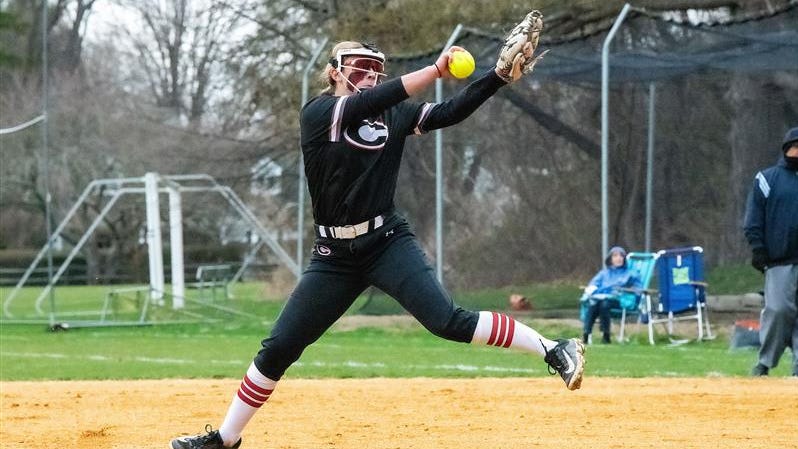Does college softball have a pitch clock? Action clock length, rules explained

Over the last few seasons, the pace of play in baseball has become more fan-favorable as the games have shortened due to the pitch clock.
The same can be said about softball.
Though the two sports have numerous differences — college softball is a seven-inning game and baseball is a nine-inning game, for example — both sports' efforts to speed up the game overall is perhaps one of their more notable similarities.
Here's what you need to know about the pitch clock in softball leading into the super regional round of the NCAA softball tournament and the Women's College World Series:
Is there a pitch clock in college softball?
Yes, college softball does have a pitch clock.
What is the pitch clock limit for college softball?
As noted by the NCAA, college softball has a pitch clock length of 20 seconds. This means pitchers have 20 seconds to begin their delivery toward the plate after receiving the ball from their catcher.
Prior to the 2024 season, the pitch clock in softball was set at 25 seconds.
Here's what Rule 10.18 of the NCAA rule book says on the pitch clock, including the three possible violations that could come:
- The pitcher has 20 seconds from when they receive the ball from the catcher to separate their hands which indicates the beginning of the pitch. Violation of this results in a ball being awarded to the batter.
- The batter has 10 seconds to take their position in the batter’s box. Violation of this results in strike being assessed to the batter.
- The catcher has 10 seconds to take their position in the catcher’s box. Violation of this results in a ball being awarded to the batter.
College softball action clock, explained
The action clock is the visible pitch clock that is used to monitor the pace of play, and is often seen on the backstop at the field. It can also be seen on the scoreboard or perhaps a built-in box/riser stand in the outfield. However, if there is no action clock visible at a stadium, it becomes the umpire's responsibility to keep track of time.
More from the NCAA rule book:
- Rule 6.7.1: For all games (media or non-media), teams are allowed a maximum of 90 seconds between half innings and at the start of the game for warmups. The time between half innings begins when the last defensive player crosses the foul line.
- Rule 10.18: The pitcher has 20 seconds from the time they receive the ball from the catcher to separate their hands and deliver the pitch. The catcher must be in the catcher's box and the batter in the batter's box within 10 seconds after the pitcher receives the ball in preparation to pitch or after the umpire calls, "Play ball."
- Rule 11.2.1: The batter must be within the batter’s box and the catcher within the catcher’s box within 10 seconds after the pitcher receives the ball in preparation to pitch or after the umpire calls, "Play ball."
Here's a look at the action clock from the SEC softball tournament in the upper corner of the backstop:
Though the pick clock is continuous through the game, there are five instances where the clock should be stopped and won't result in a pitch clock violation:
- The pitcher separates their hands which begins the motion to deliver the pitch
- With runners on base, the pitcher calls time and steps off the pitcher’s plate
- The catcher leaves the catcher’s box to give defensive signals or to confer with the pitcher from a distance (in which case the time shall stop, reset, and start again after the catcher returns to the catcher’s box)
- The batter calls "time"
- The umpire calls "time" for any legitimate reason